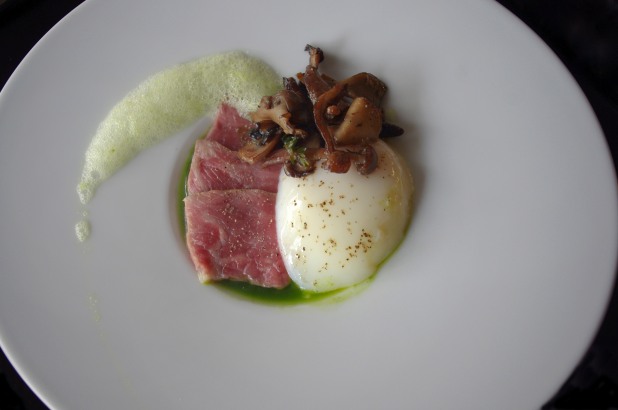Originally printed in Food & Flourish magazine.
To me there is nothing more artful in the culinary world than a thoughtfully composed tasting menu.
A good tasting menu will stretch a chef’s imagination, engage every sense of the individual eating it, and take them on a journey through a variety of flavors. More importantly however, are the portion sizes.
I may have reached a point of contention with that last sentence, but stick with me. Yes, the portion sizes on tasting menus are smaller and will rarely leave those with healthy appetites feeling stuffed, but this is intentional. The point is to leave you pleasantly satiated without being stuffed to the point of discomfort.
Overconsumption has long been in an issue in our country, made more prevalent in recent years with the onset of any number of health issues. It’s not too often you hear a chef talk about it, but the way I see it it’s up to us as chefs and restaurateurs to be calorically responsible by scaling down portions to healthy sizes. Of course, as consumers we’re not completely off the hook. There’s a mentality shift that needs to happen too.
Value is often shown through larger sizes and it’s what we’ve grown accustomed to in nearly every area of life from food to the massive family size packages of household items. Value sizing certainly has it’s place, but when it comes to food is where it becomes concerning.
According to a review published by the National Institutes of Health larger portions not only contain more energy, which is not being burned, but also encourage people to eat more. The problem is we don’t necessarily eat to our appetite or hunger. We eat what’s in front of us. So portion size leads to overconsumption of calories. We’ve also learned it’s good manners to clean our plate, and we certainly don’t want to waste food, but we also shouldn’t feel obligated to eat a 16-ounce steak just because its served to us.
We have to understand that food is fuel for our bodies. It’s fuel that can and should be enjoyable, but it’s all about portion control.
To be honest, I really wasn’t aware of portion sizes until I moved to San Francisco and began working in kitchens in the city. I noticed plates coming out of the kitchen were about 15 percent smaller. Then I started realizing the green nature of it – if you don’t have five scallops every time you go out, instead you have two, naturally there will be a lot more scallops in the world. This theory can be applied to any ingredient – seafood, beef, heirloom vegetables, bacon (oh wait…there’s no bacon shortage).
The bacon shortage hoax raises an interesting point though. It was an effort to reduce the blow of the impending bacon inflation in the UK. Food inflation may force us to think twice about buying that extra large piece of steak, and instead fill the craving with a reasonably sized portion.
Smaller portion size doesn’t have to be a negative thing though. Think of it this way, it opens the door to more variety and exploration. No one is saying you have to eat less, you just allow yourself to enjoy more flavors. With smaller portions of bold flavors, you will feel satisfied. Chef’s honor.
Let’s put a bigger emphasis on quality over quantity and the adventure food can afford us. Have fun with your food. Experience it, and remember a stuffed stomach does not equate to satisfied taste buds.

